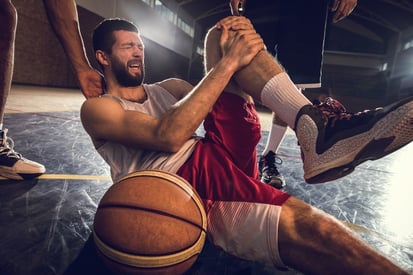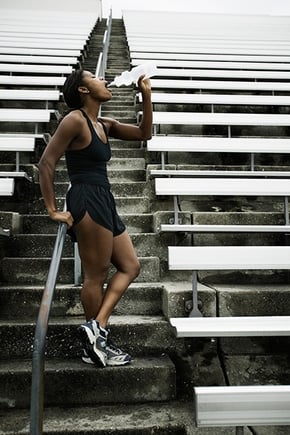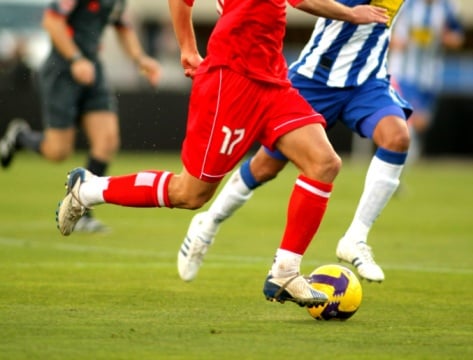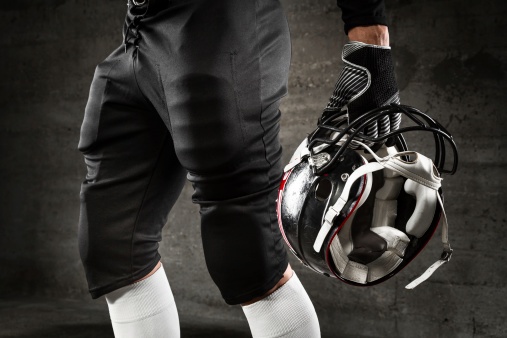 Having something come up that changes your routine or throws off your groove can be frustrating or disheartening because, let’s be honest, we all have things that we want to do. Looking at this from an athlete’s point of view is a little different than that of the general public.
Having something come up that changes your routine or throws off your groove can be frustrating or disheartening because, let’s be honest, we all have things that we want to do. Looking at this from an athlete’s point of view is a little different than that of the general public.
Athletes have essentially three seasons all compressed into one, that being the pre-season, in-season, and off-season. In each of these seasons, an athlete has personal goals that they want to meet alongside the team goals. Some of the personal goals might be to hit a certain weight on a lift in the off-season, or to reach a certain statistic during the in-season. Reaching this personal goal is extremely self-rewarding and makes an athlete strive for more; but what happens when an athlete gets injured?
The Emotional Impact of Injury
Many things happen when an athlete gets injured, but the initial feeling will be some kind of negative emotion, such as disappointment, sadness, or for a more extreme case, depression. These are just a few examples that an athlete can experience on the initial realization of sustaining an injury. An athlete can feel these emotions because it is messing with the goals that they set prior to this injury, just like anyone who had something that didn’t go as planned.
Now that the injury has occurred, and most likely a negative emotion is setting in, there are steps that an athlete can take to help with the rehabilitation process. This process is something that I have some first-hand experience with because I suffered an injury that required me to have surgery and 2–3 months of rehab afterward. These steps are something that I found helpful to keep me on track and stay motivated toward my goals when I was healthy.
Set SMART Goals and Keep Talking to Your Team
I did have that initial negative emotion of disappointment and sadness, but that soon faded once I accepted it, and I had new priorities. I made goals for myself and put on hold my goals from when I was healthy. Having these new rehab goals gave me a new focus, and not on my current situation. The goals that I made were “SMART” goals. What SMART stands for is Specific, Measurable, Attainable, Realistic, and Timely. The “specific” part should answer Who, What, Where, When, Why, and How. “Measurable” is to be able to track your progress and set benchmarks along the way. “Attainable” is having that belief in yourself and that this goal is possible. “Realistic” are the goals that you are willing and able to work at. “Timely” is setting a date for when you want to complete your goal. If you don’t set a date, there won’t be any urgency.
Along with using the SMART goal strategy, I also talked to people and teammates about how things were going. I feel it is essential to talk to someone; you can feel like you are doing this alone because you are on your own schedule and not participating with all of the team activities. An isolated feeling comes, and it can make you feel distant from everyone else. But talking to a teammate, the trainer, or a friend can make you feel like you are still a part of the team and contributing in some aspect.
Goal setting is extremely important for anything you do. It’s more important when it comes to fitness goals. If you don’t write out your goals where you can see them, you’ll forget what you are trying to accomplish. Along with that, the urgency will fade and you’ll start to rationalize with yourself that you can put off one day, and one day becomes one week, and so forth. Having goals will help with any setbacks that come along because if there is one day that doesn’t go as planned, knowing your goal finish line will still keep you on track.
This blog was written by Addison Smith. To find out more about the NIFS bloggers, click here.


 Over the past six to eights weeks, I have been creating summer workout manuals for the teams that I work with during the school year. These manuals are meant to bridge the strength and conditioning gap between the time they leave for summer break and when they return for the fall semester. There is much to be gained, or lost, through a summer of hard work (or lack thereof). Although summer break is a true “break” for most athletes academically, there never really is a true break for training.
Over the past six to eights weeks, I have been creating summer workout manuals for the teams that I work with during the school year. These manuals are meant to bridge the strength and conditioning gap between the time they leave for summer break and when they return for the fall semester. There is much to be gained, or lost, through a summer of hard work (or lack thereof). Although summer break is a true “break” for most athletes academically, there never really is a true break for training. Once the competitive season begins, scheduling time to get in to lift is a lot more difficult due to the practices, games, and travel that are happening. To me, in-season lifting is sometimes undervalued in the competitive/athletic world because of the fact that the primary focus is to win games or matches, not lift weights. However, I believe that this is one of the most important (if not the most important) times during the year because of what lifting can do for the athlete throughout the competitive season and into the off-season.
Once the competitive season begins, scheduling time to get in to lift is a lot more difficult due to the practices, games, and travel that are happening. To me, in-season lifting is sometimes undervalued in the competitive/athletic world because of the fact that the primary focus is to win games or matches, not lift weights. However, I believe that this is one of the most important (if not the most important) times during the year because of what lifting can do for the athlete throughout the competitive season and into the off-season.  In NFL and college football, each week, a star player is hit with a sidelining injury. Possibly lost for multiple weeks, months, or at worst, the whole season. Injuries that are usually the result of bad luck or not being as physically prepared as they could have been. Hopefully your team, **knock on wood**, does not or will not have to deal with this at any point during their season. My team, my beloved
In NFL and college football, each week, a star player is hit with a sidelining injury. Possibly lost for multiple weeks, months, or at worst, the whole season. Injuries that are usually the result of bad luck or not being as physically prepared as they could have been. Hopefully your team, **knock on wood**, does not or will not have to deal with this at any point during their season. My team, my beloved  As you can see, progression of strength (and power with other lifts) has to be maintained year round. This goes for all athletes throughout their seasons. If they want to continue to improve, they must prevent the loss. It is as important of a cycle of training as any. Without a properly structured in-season maintenance phase, you will be starting from the same place every time you start a new offseason training program.
As you can see, progression of strength (and power with other lifts) has to be maintained year round. This goes for all athletes throughout their seasons. If they want to continue to improve, they must prevent the loss. It is as important of a cycle of training as any. Without a properly structured in-season maintenance phase, you will be starting from the same place every time you start a new offseason training program.